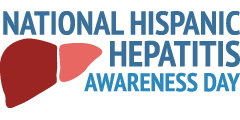More than 300,000 people in New York City are living with hepatitis C or hepatitis B (or both), according to 2017 estimates. But a new strategy released by city health officials may help drastically reduce that figure. Last week, the New York City Department of Health and Mental Hygiene (DOHMH) released the Plan to Eliminate Viral Hepatitis as a Major Public Health Threat in New York City by 2030.
After working with community stakeholders this past year—notably, the Hep Free NYC Coalition— DOHMH developed a strategy that sets three main goals to tackle the city’s hepatitis burden.
Hepatitis is inflammation of the liver, an organ that acts as the body’s filtration system. When chronic and untreated, hepatitis can lead to scarring of the liver (cirrhosis), the need for a liver transplant and death. The disease can be caused by numerous factors, including viruses, excessive alcohol use and fat accumulation. The good news is that effective cures, treatments and vaccines are available. For more information, visit Hep’s Introduction to Hepatitis.
The city’s new plan, however, focuses on hepatitis B virus (HBV) and hepatitis C virus (HCV). The plan aligns with similar goals set by New York state and the federal “Viral Hepatitis National Strategic Plan: A Roadmap to Elimination in the U.S., 2021–2025.” (In fact, a team of health leaders and researchers are about to launch the HCV Dashboard, an interactive digital tool that tracks progress in fighting hep C. Learn more at HCVDashboradNY.org.)
The city’s hepatitis strategy lays out three main goals and includes smaller targets for each one. They are:
GOAL 1. Reduce new hepatitis C infections among people in NYC 90% by 2030
“Aggressive diagnosis and treatment of hepatitis C” is required to reach this central goal, according to the plan. And it can be attained by achieving these three smaller targets:
- 90% of participants in the NYC Health Department Viral Hepatitis Program–contracted programs will be screened for hepatitis C;
- 80% of adults newly diagnosed with hepatitis C will be RNA negative within one year of diagnosis;
- The number of people reinfected with hepatitis C annually will be reduced.
GOAL 2. Reduce premature deaths among people with chronic hepatitis B and chronic hepatitis C in NYC by 65% by 2030; improve the health of people with hepatitis B and C in NYC
New Yorkers living with hep C and B are at higher risk of dying prematurely from any cause (meaning at age 64 or younger). These smaller goals will help tackle that problem:
- 90% of participants in the NYC Health Department Viral Hepatitis Program–contracted programs at risk for hepatitis B infection will be screened;
- 80% of people in NYC reported with hepatitis B since 2018 who meet American Association for the Study of Liver Diseases treatment criteria will be virally suppressed;
- 80% of people in NYC reported with hepatitis C since 2014 will be RNA negative.
GOAL 3: Reduce health inequities related to viral hepatitis infection among people in NYC
Asian and Pacific Islander residents of New York City experience a death rate from hep B that is seven times higher than white residents. Latinos and African Americans see higher rates of death from hep C compared with white counterparts (2.9 and 2.6 times higher, respectively). The city’s plan to end hepatitis promotes equal access to hep care and treatment, which can be attained by reaching these targets:
- Mortality due to hepatitis B will be reduced by 65% for Asian or Pacific Islander people in NYC;
- Mortality due to hepatitis C will be reduced by 65% for Black and Latino people in NYC;
- Inequities in hepatitis B and C treatment rates across neighborhoods of residence will be reduced.
“Hepatitis B is a major health problem and is a leading cause of liver cancer, yet it is often undiagnosed,” said Y-Uyen Le Nguyen, MD, the hepatitis B program director at the Charles B. Wang Community Health Center, in a city press release on the hep plan. “According to the U.S. Department of Health and Human Services, 67% of persons with hepatitis B do not know they carry the virus. To eliminate hepatitis B, it is important to cast a wide net with universal screening and vaccination.”
“Implementation of a plan to eliminate hepatitis B and C in New York City is a critical step forward,” added Charles King, CEO of Housing Works, which fights the dual epidemics of homeless and HIV. “It will not be an easy challenge, but we will never accomplish this goal without a deliberate plan and the resources to go with it. Housing Works strongly supports this initiative.”
The release of the hepatitis plan follows the opening in New York City of the nation’s first publicly recognized overdose prevention centers, also referred to as supervised injection sites. Check out this Hep article to learn more about the new sites, which averted 59 overdoses in its first three weeks of operation.
Injection drug use—notably, the sharing of needles—is a common way hepatitis is spread. For more details, see “Hepatis B Transmission and Risks” and “Hepatitis C Transmission and Risks.”
Disclaimer: This article has been reproduced from https://www.hepmag.com/article/new-york-city-plans-end-viral-hepatitis-2030


